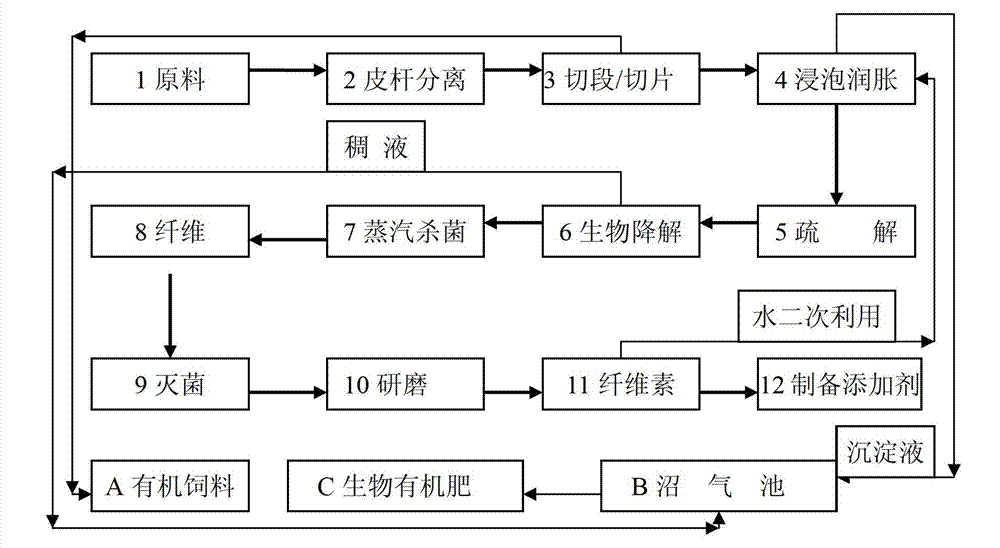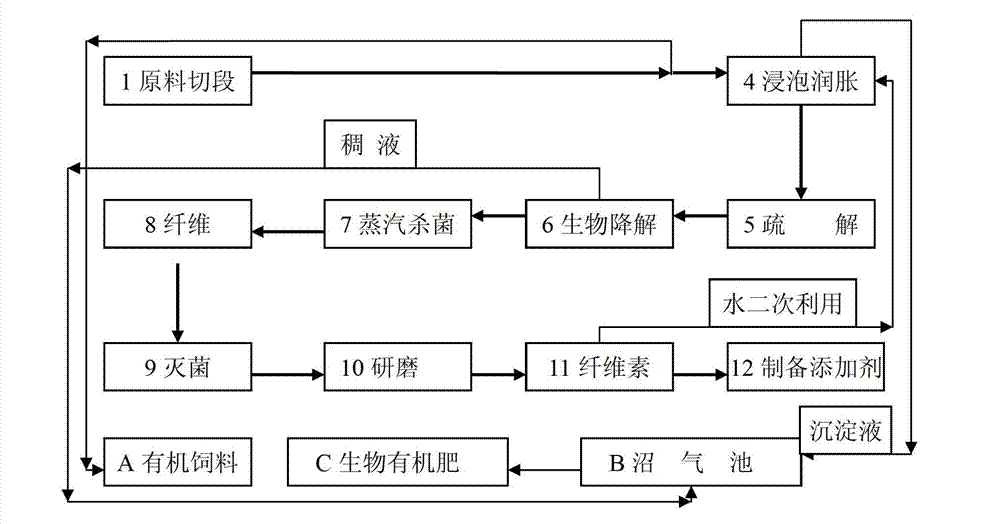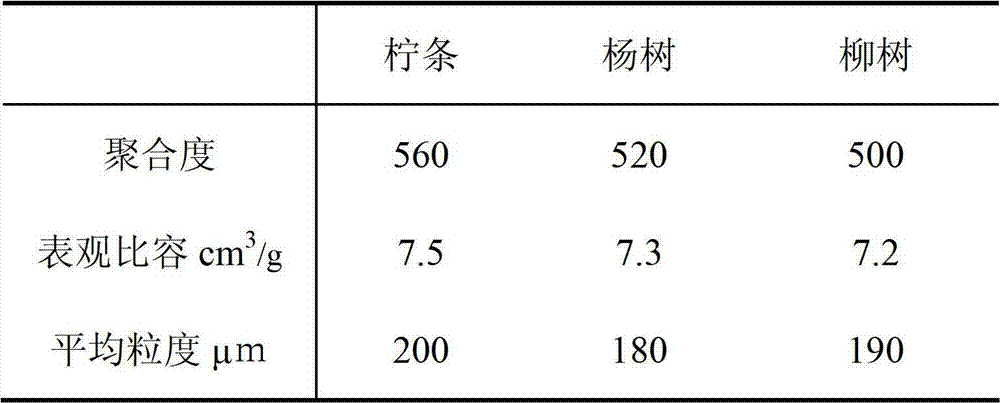Composite flora for biological preparation of cellulose additive, and applications thereof
A technology of compound flora and additives, applied in microorganism-based methods, fertilizers made from biological waste, biochemical equipment and methods, etc. Organic matter cannot be reused, etc., to achieve the effect of saving coal consumption, low production cost, and improving purity and yield
- Summary
- Abstract
- Description
- Claims
- Application Information
AI Technical Summary
Problems solved by technology
Method used
Image
Examples
Embodiment 1
[0028] Example 1 Configuration of Bacteria Solution
[0029] The biological bacteria used in the present invention have been preserved on April 6, 2012 at the General Microorganism Center (CGMCC, No. 3, No. 1, Beichen West Road, Chaoyang District, Beijing) of the China Microbiological Culture Collection Management Committee, and the preservation number is CGMCC. Bacillus sp. No.5971, Rheinheimera tangshanensis with CGMCC No.5972, Acinetobacter lwoffii with CGMCC No.5973.
[0030] The above-mentioned composite bacteria group is configured into a composite bacteria aqueous solution according to the following mass ratio, which is the bacterial solution:
[0031] Bacillus: Rheinrichia Tangshan: Acinetobacter ruckeri is 2-3:1-2:1-2; the density of the formed bacterial liquid is more than 60 million bacteria / ml, ready for use.
Embodiment 2
[0032] Example 2 Preparation of fibers from woody raw materials
[0033] Using caragana as raw material, the cellulose preparation method when woody raw materials are used is described in detail. The other woody raw materials, such as the cellulose preparation method of poplar and willow, can be carried out with reference to this process. Wherein when using caragana, the composite flora is configured according to the following mass ratio: Bacillus: Rhinemeria tangshani: Acinetobacter ruckeri is 3:1:2; when poplar is used, the composite flora is configured according to the following mass ratio Configuration: Bacillus: Rheinrichia Tangshan: Acinetobacter ruckeri is 2:1:2; when using willow, the composite flora is configured according to the following mass ratio: Bacillus: Rheinrichia Tangshan: Acinetobacter ruckerii Anitobacter is 3:2:1.
[0034] For details, please refer to figure 1 , the process flow of the cellulose preparation method is divided into three stages: a prepar...
Embodiment 3
[0054] Example 3 Preparation of cellulose from herbal raw materials
[0055] Using wheat straw as a raw material, the cellulose preparation method when the herbal raw material is used is explained in detail. The other herbal raw materials, such as the cellulose preparation method of straw and reed, can be carried out with reference to this process.
[0056] Wherein when using wheat straw, the composite flora is configured according to the following mass ratio: Bacillus: Rhinemeria tangshanense: Acinetobacter ruckeri is 3:2:1; when using straw, the composite flora is configured according to the following mass ratio Configuration: Bacillus: Rheinrichia Tangshan: Acinetobacter ruckeri is 2:2:2; when reed is used, the composite flora is configured according to the following mass ratio: Bacillus: Rheinhelmia Tangshan: Acinetobacter ruckerii Anitobacter is 3:1:1.
[0057] For details, please refer to figure 2 , the process flow of the cellulose preparation method is divided into...
PUM
 Login to View More
Login to View More Abstract
Description
Claims
Application Information
 Login to View More
Login to View More - R&D Engineer
- R&D Manager
- IP Professional
- Industry Leading Data Capabilities
- Powerful AI technology
- Patent DNA Extraction
Browse by: Latest US Patents, China's latest patents, Technical Efficacy Thesaurus, Application Domain, Technology Topic, Popular Technical Reports.
© 2024 PatSnap. All rights reserved.Legal|Privacy policy|Modern Slavery Act Transparency Statement|Sitemap|About US| Contact US: help@patsnap.com










